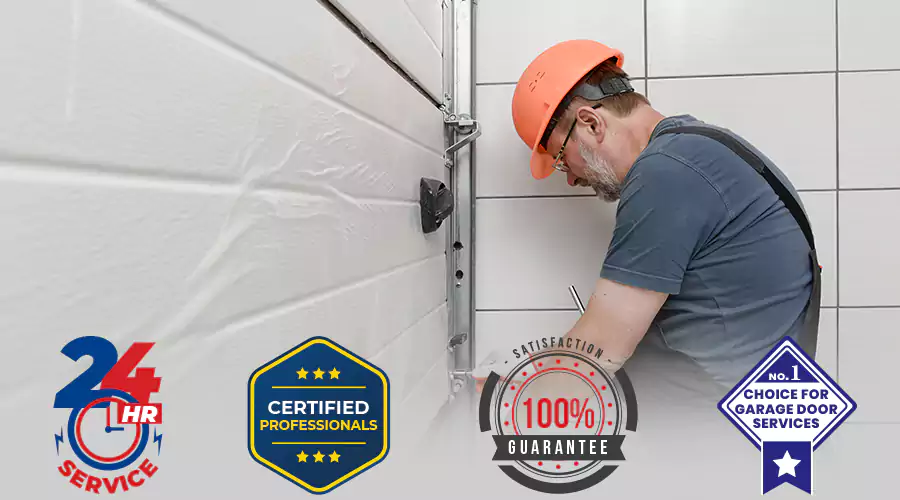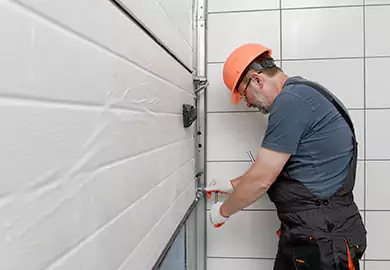
Insulating your garage door isn’t just fixing stuff—it’s like giving your garage a cozy blanket! It helps to save energy and comfort-boosting that makes your garage feel nicer. If it’s scorching summers or freezing cold in winter, a garage door without insulation makes the house colder or hotter too. Doing a garage door insulation DIY is a fun project that can help you pay less for electricity, make your garage more livable, and keep your stuff safe from the weather.
As a professional in home maintenance, I’ve seen many garages become awesome places once they have garage door heat insulation. This guide will show you how to use the finest material for garage door insulation, whether your garage door is made of metal, wood, or steel.
Why Insulate a Garage Door?
Adding insulation on your garage door is a smart idea because it helps your garage in many ways:
- It reduces heat loss in winter so your garage stays warmer.
- It improves the temperature inside the garage better all year, not too hot or too cold.
- It makes the garage quieter because it helps to enhance the soundproofing system.
- It increases the durability and strength of the garage door.
- It enables you to save money on energy bills with an energy-efficient garage door.
- It makes the garage more comfortable for the workspace or storage area
Proper insulation helps maintain consistent temperatures throughout the year, whether you're storing equipment, utilizing it as a gym, or organizing a weekend project. Choosing an Insulated Roll Up Garage Door enhances this effect by keeping your space warmer in winter and cooler in summer. Insulating a garage door for the winter improves comfort and saves money for homeowners in colder regions.
Materials Needed for Garage Door Insulation
Before starting, gather all necessary garage insulation materials to streamline the process:
| Item | Purpose |
|---|---|
| Garage door insulation kit | Consists of pre-cut panels or foam board garage door insulation |
| Measuring tape | Helps to measure accurate sizing |
| Utility knife or scissors | Used to cut the insulation panels |
| Straightedge or ruler | Makes clean, straight cuts |
| Double-sided tape / adhesive | Sticks the insulation to the garage door panels |
| Weatherstripping / tape | Seals the little gaps and edges |
| Gloves and safety goggles | Keeps your hands and eyes safe when cutting |
Types of Insulation for Garage Doors
Picking the best stuff to insulate your garage door depends on where you live and how you use your garage. Here are some really good choices:
- Foam board insulation: It is lightweight and keeps heat out really well (it has a high R-value!). It works great on flat garage doors and is ideal for garage door heat insulation.
- Reflective insulation: It looks shiny because it has aluminum foil on one or both sides. It bounces radiant heat away, so it’s super perfect for a hot climate.
- Fiberglass insulation: It is a very efficient thermal barrier that maintains the garage's temperature. But you need to cover it to prevent fiber exposure.
There are also cheap garage insulation options if you're on a tight budget! You may do it yourself and save money by using recycled materials or get a DIY kit.
Step-By-Step Insulate A Garage Door Process
Step 1: Clean the Garage Door
First, clean your garage door really well! Use a broom or brush to sweep off all the dust and little bits of dirt. Then, take a wet cloth and wipe the garage door to get rid of any grease or sticky stuff. The garage door must be very clean so the garage door insulation kit will stick effectively. Let the garage door dry completely before moving to the next step.
Step 2: Measure Your Garage Door
Now it’s time to measure! Accurate measurements are essential. Use a measuring tape and write down the width and height of each part (called panels). Some garage doors, like insulating metal garage doors, are shaped differently, so you must be extra careful when measuring. Always write measurements down before you start cutting any material!
Step 3: Cut the Insulation to Fit
Grab a pencil and ruler and mark where you need to cut. Use a straightedge and a utility knife to cut each of the insulation panels neatly. If you’re using foam board garage door insulation, ensure your pieces fit right inside the panels. They should be nice and snug, not sticking out or bulging.
Step 4: Install the Insulation
For Foam Board or Reflective Insulation:
- Gently press each piece into the garage door panels.
- Use double-sided tape or adhesive for a stronger hold.
- Ensure that no gaps exist where air may flow.
For Fiberglass Insulation:
- Cut to size and place it inside each panel.
- Cover with vinyl or plastic sheeting to keep fibers contained.
Step 5: Seal the Gaps
Seal edges and corners with insulation tape or weatherstripping. This is crucial for garage door temperature control and helps reduce garage heat loss. Sealing ensures maximum effectiveness for older or slightly warped garage doors.
Additional Garage Door Insulation Tips
- Check the bottom seal of the garage door and replace it if worn.
- Add a threshold seal to block water or air from entering.
- Consider using adhesive-backed foam for hard-to-fit areas.
- For extreme climates, combine multiple insulation types.
Benefits of a Well-Insulated Garage Door
Maintaining constant inside temperatures is easier with an energy-efficient garage door, especially if your garage is connected to your house. Key benefits include:
- Reduced heating and cooling bills
- Better indoor air quality
- Lower moisture buildup and mold risk
- Improved garage door soundproofing for peace and quiet
- Longer lifespan of items stored in the garage
Maintenance Tips for Insulated Garage Doors
| Task | Frequency |
|---|---|
| Inspect insulation | Every 6 months |
| Clean surface | Quarterly |
| Check mechanical parts | Monthly |
| Reseal gaps with weatherstripping | Annually |
Maintaining your insulation ensures long-term benefits and keeps your garage insulation DIY project effective.
Final Thoughts
Whether you're battling desert heat or winter chill, knowing how to insulate a garage door gives you better control over your indoor climate. With the right garage insulation materials and proper technique, anyone can complete this DIY project in a weekend.
Make your garage quieter, more energy-efficient, and usable all year round. From garage insulation for winter to summer heat-proofing, the effort you put in today delivers savings and comfort tomorrow.
Choosing a high-quality garage door insulation kit is the first step for homeowners looking to maximize efficiency without hiring professionals. Apply these garage insulation ideas, maintain your setup, and enjoy a well-protected space for years to come.


